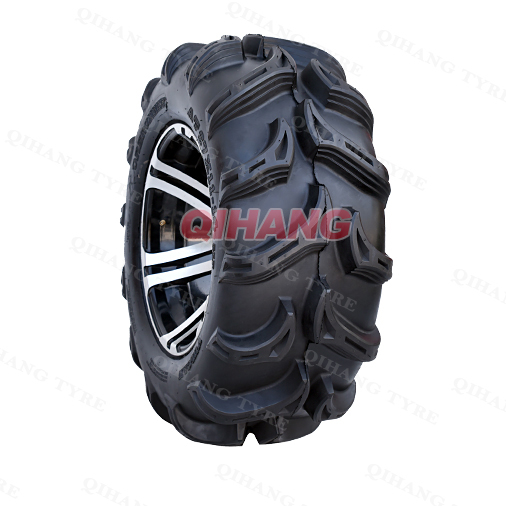There are significant differences between heavy-duty industrial tires and ordinary tires. These differences are mainly reflected in the design and structure, use and scope of application, performance characteristics, price and cost. The choice of which tire depends on the specific vehicle type, use environment and needs. The following is a detailed analysis of the difference between the two:
1. Design and structure
Heavy-duty industrial tires: usually adopt a more solid and heavy carcass design to meet the high load requirements of heavy equipment and engineering vehicles; the tread width is larger and the tread rubber layer is thicker to provide better wear resistance and cut resistance; the number of cord layers is more to enhance the structural strength and load-bearing capacity of the tire.
Ordinary tires: The design is relatively simple, the carcass is thinner, and it is suitable for daily vehicle use; the tread width and tread rubber layer thickness are moderate to meet daily driving needs.
2. Use and scope of application
Heavy-duty industrial tires: mainly used for heavy equipment and engineering vehicles in mining, construction, ports, agriculture and other fields; can withstand the challenges of high loads and complex road conditions in harsh working environments.
Ordinary tires: suitable for various vehicles used in daily driving, such as sedans, SUVs, trucks, etc.; mainly used in regular road conditions such as urban roads, rural roads and highways.
3. Performance characteristics
Heavy-duty industrial tires: with extremely high load-bearing capacity and wear resistance, they can work for a long time under high load and bad road conditions; strong grip and excellent anti-skid performance, ensuring the stability and safety of heavy equipment and engineering vehicles under various road conditions; good heat dissipation performance, able to adapt to work needs under extreme climatic conditions such as high and low temperatures.
Ordinary tires: high durability, but lower load-bearing capacity and wear resistance than heavy-duty industrial tires; suitable for driving needs under regular road conditions, but may not perform well under bad road conditions; moderate grip and anti-skid performance, able to meet the safety needs of daily driving.
4. Price and cost
Heavy-duty industrial tires: due to the use of more sturdy and complex structural design, and the use of high-performance materials, the price of heavy-duty industrial tires is usually higher. However, considering their high load-bearing capacity and wear resistance, as well as their long service life, the overall cost of heavy-duty industrial tires may be lower.
Ordinary tires: relatively low price, suitable for daily driving needs. However, due to limited load-bearing capacity and wear resistance, more frequent replacement may be required, increasing the overall cost.


